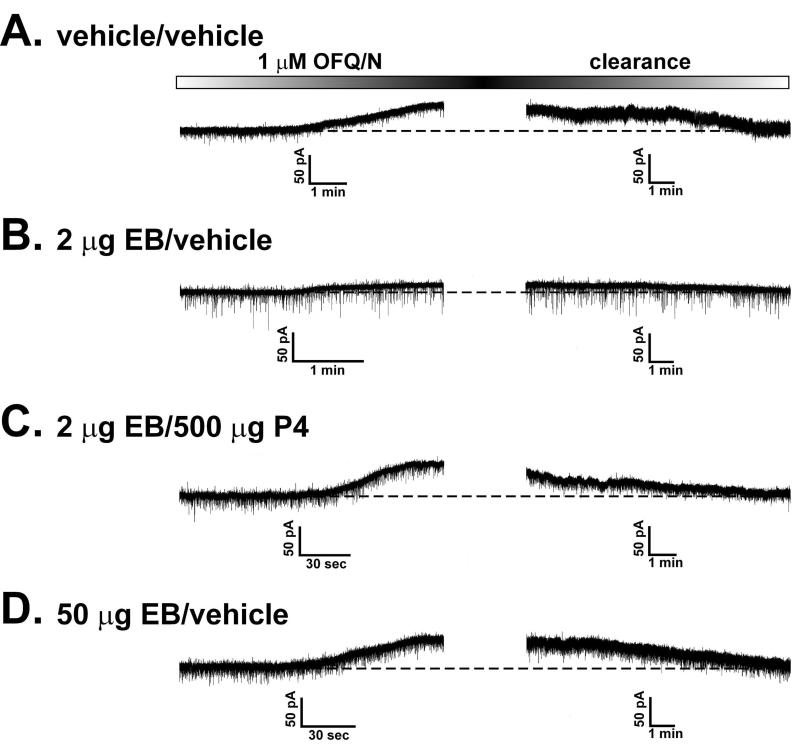Figure 6.
Membrane current traces that illustrate the OFQ/N-induced outward currents recorded in identified POMC neurones from OVX rats either 30 hr after the initial vehicle or EB priming and four hr after the second vehicle or progesterone (P4) treatment (A-C), or 48 hr after a high dose of EB (50 μg) that elicits sexual receptivity much like that seen in EB-primed, P4-treated animals (D). These recordings were performed in the presence of 1 μM TTX to ensure a direct postsynaptic effect. For each example, OFQ/N application commenced as signified by the left-hand side of the OFQ/N application timeline box located above each set of traces. I/V relationships were routinely generated prior to, and in the presence of, OFQ/N. This necessitated switching between gap-free and episodic protocols, which precluded the acquisition of a single trace showing both the outward current and its wash-out. The time necessary to conduct the second I/V and then switch back to the gap-free recording of washout took, at most, 90 sec. The two panels, both of equal dimensions, were aligned along their respective X-axes. The time required for complete OFQ/N washout was variable, and in some instances, it took as long as 20 min to be achieved. This is why the time scales for the two halves of the recording are different.

